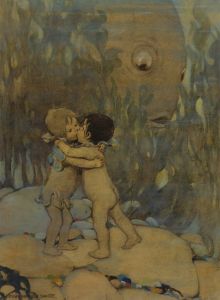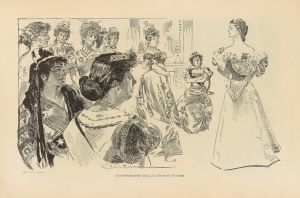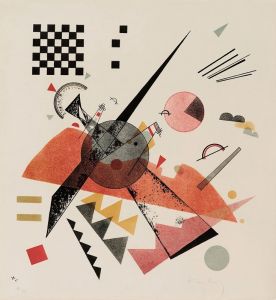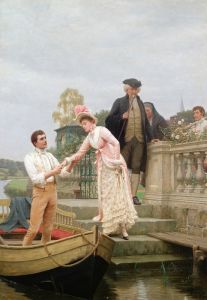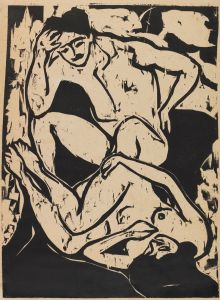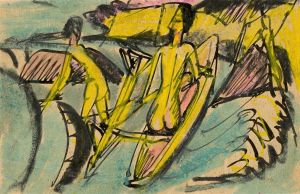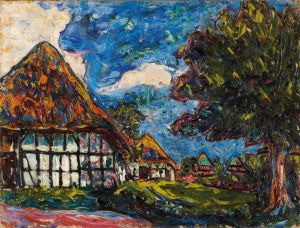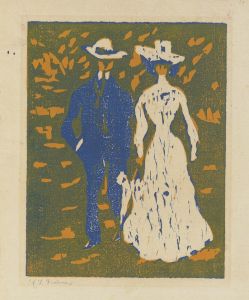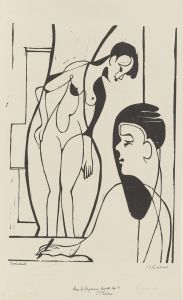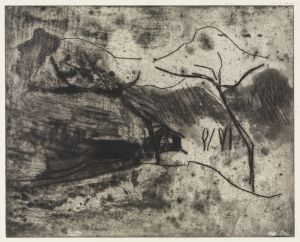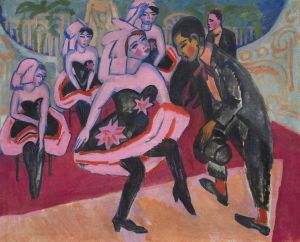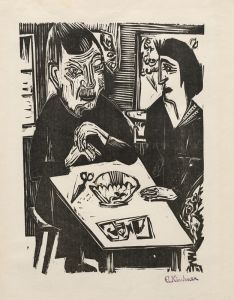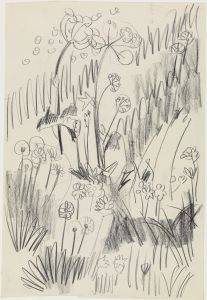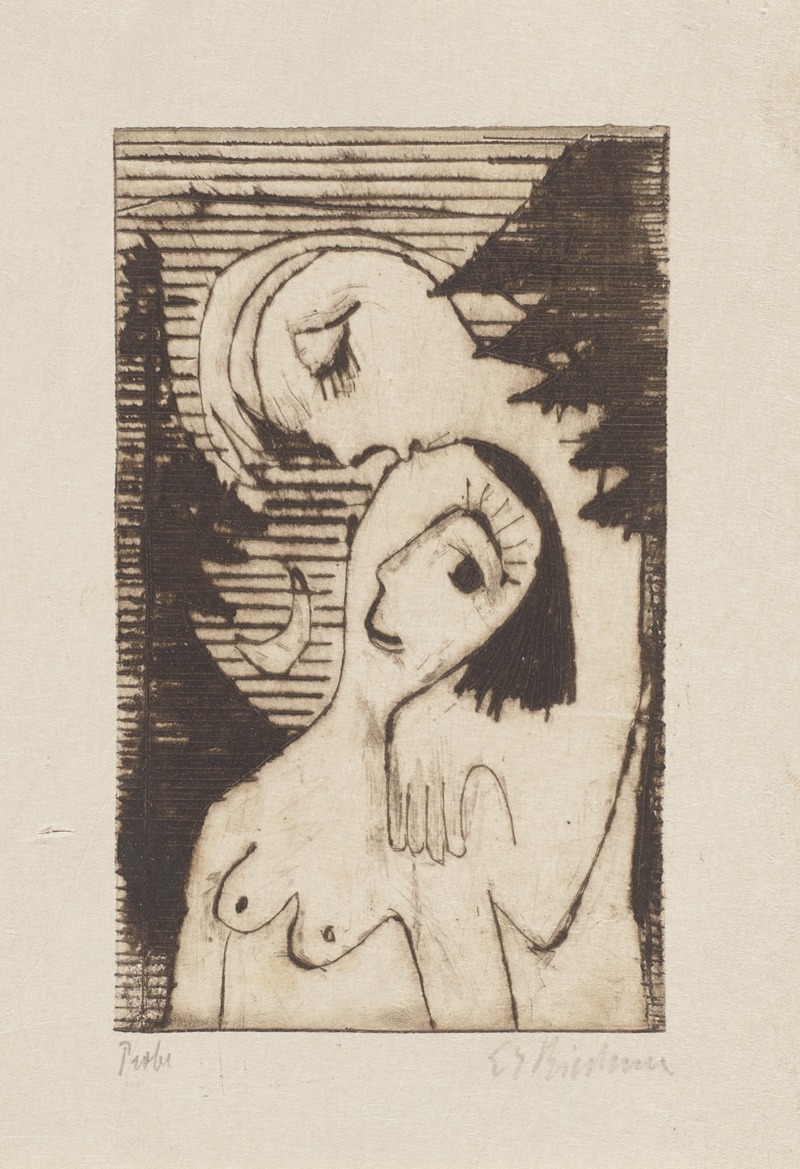
Der Kuss
A hand-painted replica of Ernst Ludwig Kirchner’s masterpiece Der Kuss, meticulously crafted by professional artists to capture the true essence of the original. Each piece is created with museum-quality canvas and rare mineral pigments, carefully painted by experienced artists with delicate brushstrokes and rich, layered colors to perfectly recreate the texture of the original artwork. Unlike machine-printed reproductions, this hand-painted version brings the painting to life, infused with the artist’s emotions and skill in every stroke. Whether for personal collection or home decoration, it instantly elevates the artistic atmosphere of any space.
Ernst Ludwig Kirchner, a prominent German expressionist painter and one of the founding members of the art group Die Brücke, created numerous works that explored themes of human emotion, intimacy, and modern life. Among his extensive body of work is the painting Der Kuss (The Kiss), which reflects his characteristic style and thematic focus.
Der Kuss is an example of Kirchner's exploration of human relationships and emotional intensity. The painting is marked by bold, angular forms and vibrant, contrasting colors, which are hallmarks of the expressionist movement. Kirchner's use of exaggerated lines and distorted proportions in this work emphasizes the emotional connection between the figures rather than adhering to realistic representation. This approach aligns with the goals of Die Brücke, which sought to break away from traditional academic art and instead express raw, unfiltered emotion.
The painting depicts a couple locked in an intimate embrace, their faces merging into one another in a way that symbolizes unity and passion. This motif of merging figures was a recurring theme in Kirchner's work, reflecting his interest in the psychological and physical aspects of human connection. The composition is dynamic and energetic, with the figures appearing almost sculptural in their interwoven forms. The background is often simplified or abstracted, drawing attention to the central figures and their emotional interaction.
Kirchner's work, including Der Kuss, was influenced by a variety of sources, including non-Western art, particularly African and Oceanic art, which he admired for its perceived authenticity and directness. These influences can be seen in the stylized forms and bold outlines of the painting. Additionally, the vibrant color palette and expressive brushwork reflect the influence of post-impressionist artists such as Vincent van Gogh and Paul Gauguin.
Der Kuss was created during a period of significant artistic experimentation for Kirchner and his contemporaries in Die Brücke. The group, active from 1905 to 1913, sought to challenge societal norms and explore new forms of artistic expression. Their work often addressed themes of modernity, urban life, and human relationships, as well as the tension between civilization and nature.
While specific details about the creation date and current location of Der Kuss are not readily available, the painting remains an important example of Kirchner's contribution to the expressionist movement. It exemplifies his ability to convey deep emotion and psychological complexity through innovative artistic techniques.
Ernst Ludwig Kirchner's legacy as a leading figure in German expressionism continues to be celebrated, and works like Der Kuss offer insight into his unique artistic vision and the broader cultural and artistic currents of the early 20th century.





